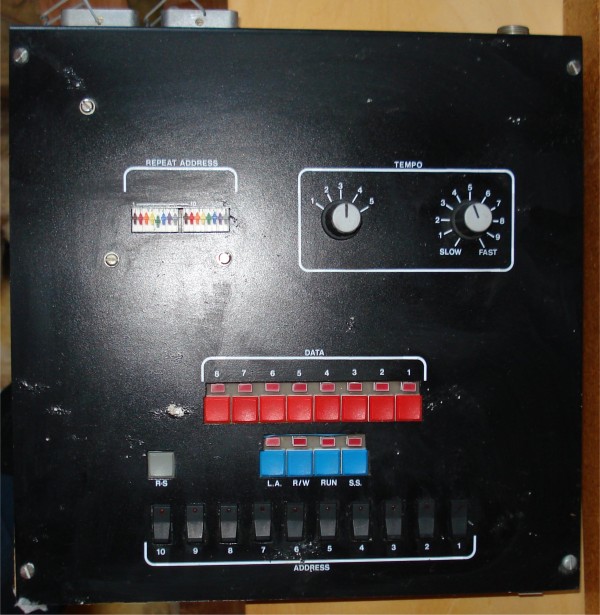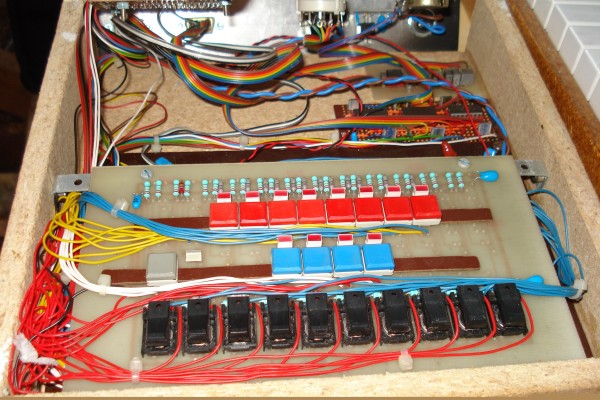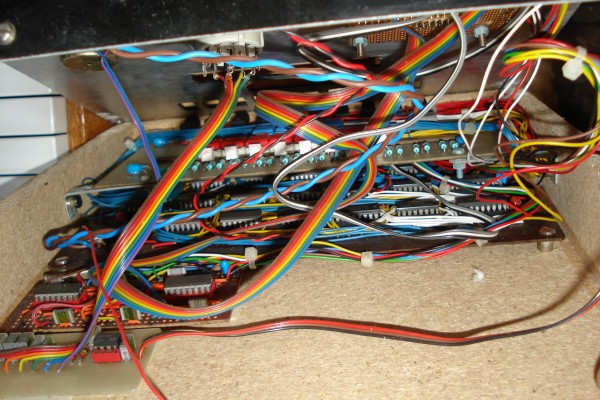Introduction
In the late 70's, early 80's I was looking for a self build project that was more than the usual Everyday Electronics/Practical Electronics/ETI projects and looking through the Maplin catalogue I came across the Maplin 5600/3800 synthesisers.
This was a sizable project and as at that time I was cash poor I chose to build the 3800. I also had to plan how I could build this with the minimum of outgoings. I bought the construction manual from Maplin and on reading I could see that each module had detailed instructions along with circuit overlays. Not being able to afford the full kit I decided that I could produce my own artworks from the overlays shown in the manual and etch my own circuit boards (I had access to an etch tank). The first problem I came up against was that the board overlays shown were not to scale, to solve this I photographed each board overlay and projected them actual size onto paper and then with a sheet of acetate and transfers I got to work. The only circuit board I had to buy was the Binary Encoder as it was to big for me to make.
The entire synthesiser was built in this manor, for instance the faceplate, I obtained a cheap piece of 3mm thick aluminium, cut it to size, drilled, painted and the using Letraset labelled it according to the information in the manual. The case was built in a similar way, I sketched some plans by measuring the keyboard and faceplate, bought some chipboard and started sawing and varnishing.
The whole project took a couple of years, I think I finished it towards the end of 1982 but it was worth the time just for the experience in construction and fault finding.
The 3800 synthesiser was capable of being triggered from an external source so I designed
and built a sequencer. There are a few photos below showing the unit.
The sequencer was a bit primitive and
awkward to use as there was no way of storing the sequence, I didn't use computers or microcontrollers back then!. If I found
a good sequence I had to write it down and if the sequencer was powered down the data would be lost forever!
Now in 2016 I have returned to the Synthesiser project and have repaired about a dozen faults that have appeared after almost 30 years
of disuse. I have also revisited the sequencer, utilising a Raspberry Pi and writing software to emulate the old functionality. I have since
updated that so that sequences can be saved and loaded, a vast improvement over my 1980's sequencer. Please read my Raspberry Pi page for
details.
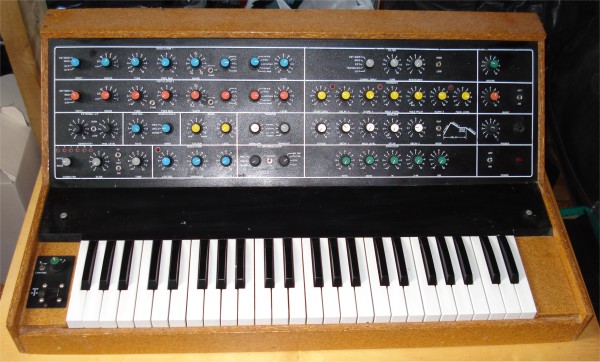
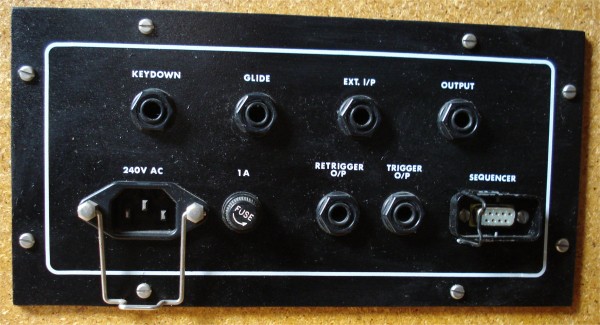
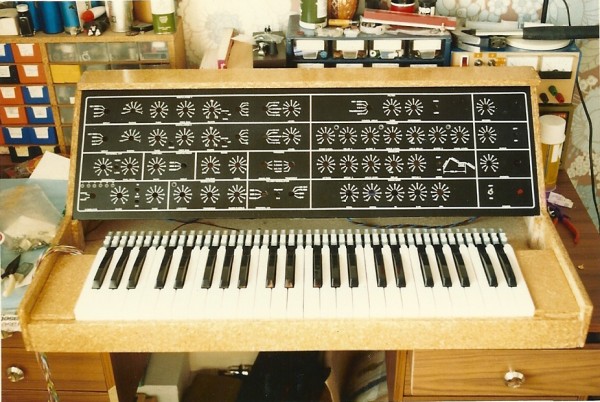
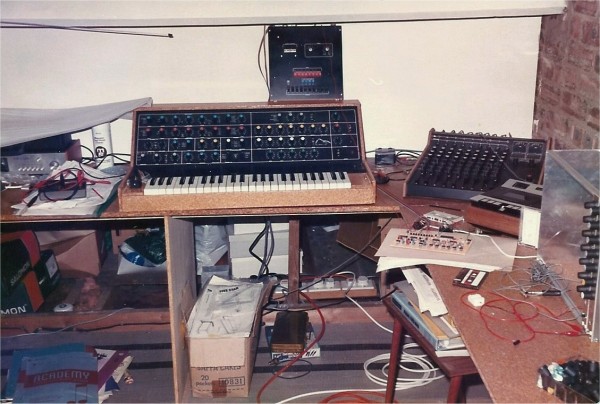
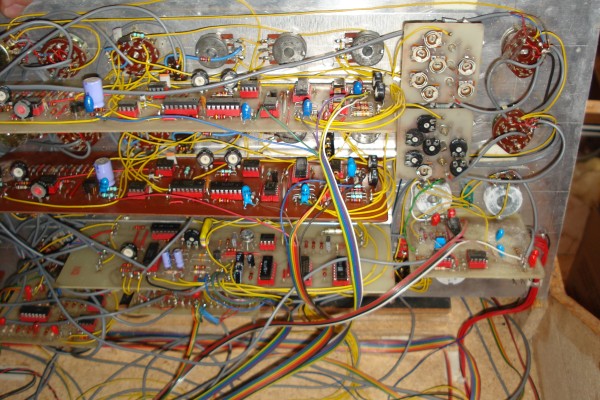
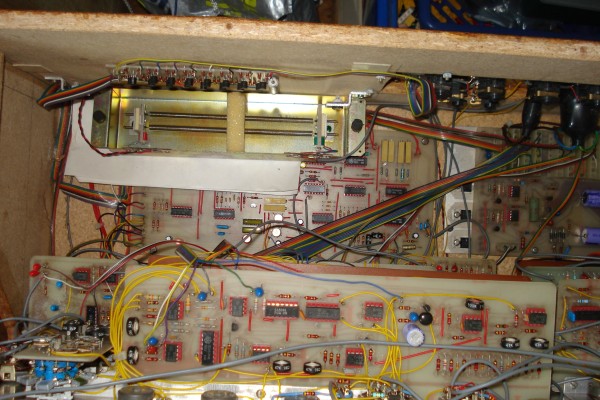
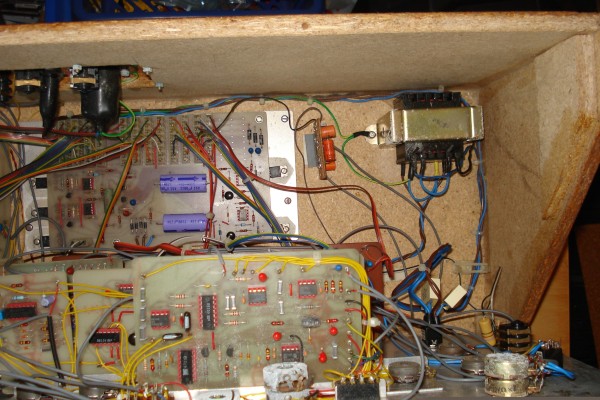
I have copied my workbook from the build along with the few pages from the 1984 Maplin catalogue.
Specification from the 1984 Maplin catalogue
Maplin 3800 workbook
